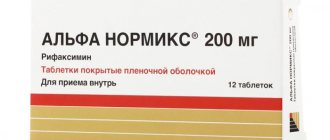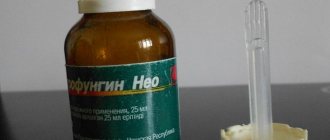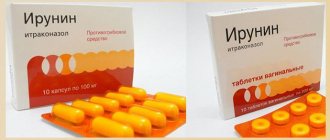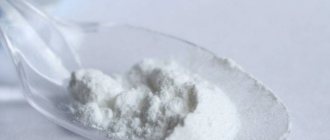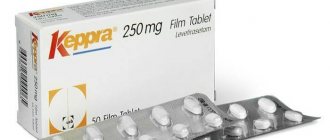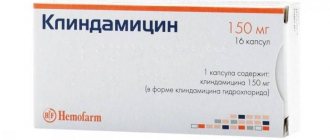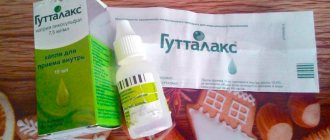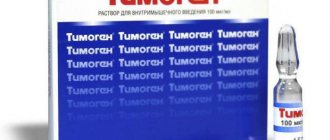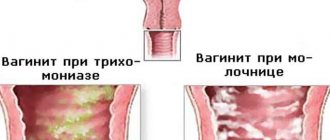Among other medicines, drugs that stimulate the immune system are used to treat COVID-19. One of them is Interferon alpha. This remedy can be taken for medicinal purposes only after consultation with your doctor. Experts tell us why Interferon alpha is needed for coronavirus, whether this medicine helps or not.
Properties of alpha interferon
It turned out that interferon alpha has the unique ability to almost instantly trigger mechanisms for destroying viruses, pathogenic bacteria and fungi, allergens and other antigens. Thanks to alpha interferon, coordination of the actions of various cells of the immune system is ensured, stopping the growth and reproduction of infectious agents. Interferon alpha prevents and slows down the action of T-suppressor cells that suppress the immune response of B lymphocytes and other T lymphocytes to antigens. Interferon alpha, by increasing the number of receptors on the membrane of immune cells, enhances the process of capture and absorption of foreign agents by them, and activates the production of specific antibodies that destroy antigens. Interferon alpha is involved in the formation of a defense mechanism against intracellular pathogens. Under its influence, the formation of proteins on the cell membrane is enhanced, thereby improving the process of recognition and destruction of antigens by T cells.
Trade names and manufacturers
Preparations containing IFN-α2b are produced by both domestic and foreign pharmaceutical manufacturers.
The drug substance is available under the following trade names:
- Altevir (Pharmstandard, Russia);
- Alfarona (Pharmaclon, Russia);
- Binnoferon Alpha (Binnopharm, Russian Federation);
- Viferon (Feron, Russia);
- Grippferon (FIRN M, Russia, nasal forms only);
- Interfal (produced on the basis of the state research institute, Russia);
- Intron (Schering-Plough, Belgium);
- Laifferon, Reaferon (Vector Medica, Russia);
- Realdiron (Teva, Israel).
In addition to medicines under the trade names Reaferon, Altevir, this substance is also included in multicomponent analogues. These medications are intended to be administered into the rectum, sprayed onto the mucous membrane of the nasal cavity, or applied to the skin. For example, Allergoferon, Genferon, Mikoferon. All listed products are produced in Russia.
Antiviral effect
Interferon alpha is a type 1 interferon and is produced by cells of the immune system in response to any infectious attack. On the one hand, viruses provoke increased production of interferon alpha, thereby triggering a series of reactions aimed at their destruction. On the other hand, interferon alpha activates intracellular enzymes that destroy factors that cause the production of genetic structures of viruses - RNA and DNA. In addition, when the virus has entered the cell and begins to multiply, alpha interferon blocks this process, and also prevents viruses from attaching to the cell membrane and makes neighboring healthy cells immune to viral attacks. A very important point is that the amount of interferon alpha increases 2 hours after the introduction of the virus, and its antiviral effect then persists for 1 to 2 days. When, as soon as 2 days after viruses enter the body, natural killer cells are involved in the process of destroying them, and even later the production of antibodies begins.
Interferon alpha-2 recombinant human
S/c, i/m; maximum doses - intravenous drip, slowly (over 30-60 minutes). The required dose is pre-diluted with 50 ml of 0.9% NaCl solution (12 million IU).
For hairy cell leukemia, the recommended initial dose is 3 million IU per day for 6 months. If therapy is ineffective, the drug is discontinued; if positive dynamics are observed, then treatment should be continued until hematological parameters improve, and after achieving stability, therapy is carried out for another 3 months at 3 million IU 3 times a week.
For multiple myeloma, the initial dose is 3 million IU 3 times a week with a weekly increase to the maximum tolerated dose of 9-18 million IU 3 times a week. This regimen should be maintained indefinitely, except in cases where the disease develops too quickly or the patient becomes intolerant to the drug.
For non-Hodgkin's lymphoma, the initial dose is 3 million IU 3 times a week for 2 weeks, then the recommended dose is 6 million IU 3 times a week; from 14 weeks - 3 million IU 3 times a week.
Maintenance therapy after standard chemotherapy (with or without radiation therapy) - 3 million IU 3 times a week for at least 12 months.
For cutaneous T-cell lymphoma: - days 1-3 - 3 million IU/day, days 4-6 - 9 million IU/day, days 7-84 - 18 million IU/day; maintenance dose - maximum tolerated (no more than 18 million IU) 3 times a week.
For chronic myeloid leukemia and thrombocytosis in chronic myeloid leukemia: days 1-3 - 3 million IU/day, days 4-6 - 6 million IU/day, days 7-84 - 9 million IU/day, course - 8-12 weeks. After stabilizing the number of leukocytes, the frequency of administration is 3 times a week. This regimen should be maintained indefinitely, except in cases where the disease develops too quickly or the patient becomes intolerant to the drug.
For thrombocytosis in myeloproliferative diseases (except chronic myeloid leukemia): days 1-3 - 3 million IU/day, days 4-30 - 6 million IU/day.
For Kaposi's sarcoma: days 1-3 - 3 million IU/day, days 4-6 - 9 million IU/day, days 7-9 - 18 million IU/day, if tolerated, days 10-84 - up to 36 million IU/day ; maintenance dose - maximum tolerated (no more than 36 million IU) 3 times a week.
For renal carcinoma: days 1-3 - 3 million IU/day, days 4-6 - 9 million IU/day, days 7-9 - 18 million IU/day, if tolerated, days 10-84 - up to 36 million IU/day ; maintenance dose - maximum tolerated (no more than 36 million IU) 3 times a week; The duration of treatment ranges from 8-12 weeks to 16 months. In combination therapy with vinblastine - 3 million IU 3 times a week, in the second week - 9 million IU 3 times a week, then 18 million IU 3 times a week. During this period, vinblastine is administered at a dose of 0.1 mg/kg once a week. Duration of therapy is 3-12 months. In case of complete remission, treatment can be stopped 3 months after its onset.
Melanoma - 18 million IU 3 times a week for 8-12 weeks; maintenance dose - 18 million IU 3 times a week for 8-12 weeks; If there is a positive effect, therapy is continued for up to 17 months; if there is no positive effect, it is stopped.
For acute hepatitis B (mild, moderate and severe forms), 1 million IU is prescribed 2 times a day for 5-6 days, then 1 million IU/day is administered for another 5 days. If necessary, the course of treatment can be continued - 1 million IU 2 times a week for 2 weeks. The course dose is 15-21 million IU.
For chronic active hepatitis B (including delta-positive chronic hepatitis B), the recommended dose is 4.5 million IU 3 times a week for 4-6 months. If the number of markers of viral replication or hepatitis B virus surface antigen does not decrease after 1 month of treatment, then the dose should be increased to 6 million IU 3 times a week. If there is no improvement after 3-4 months, the course of treatment should be stopped.
For chronic hepatitis C, 3-6 million IU is prescribed 3 times a week, the duration of treatment is up to 3 months; maintenance dose - 3 million IU 3 times a week for another 3-9 months (to consolidate remission in patients with normalized ALT activity in plasma). If within 16 weeks from the start of therapy there is no decrease in the activity of “liver” transaminases, then treatment should be discontinued.
For genital warts, the dose is 0.1-1 million IU (depending on the area of the lesion) 3 times a week. The drug is injected with a thin needle into the base of the damaged area; the number of lesions should be counted to calculate the total simultaneously administered dose, which should not exceed 3 million IU. Each cycle of therapy includes 3 doses per week for 3 weeks. Improvement is usually observed within 4-6 weeks from the start of the first cycle of therapy. In some cases, the treatment cycle should be repeated using similar doses.
For tick-borne encephalitis (including the meningeal form), 1-3 million IU is administered 2 times a day for 10 days. Then they switch to maintenance therapy of 1-3 million IU every 2 days 5 times.
Primary and secondary thrombocytosis - 2 million IU/day 5 days a week for 4-5 weeks. If the platelet count does not decrease after 2 weeks, the dose is increased to 3 million IU/day; if there is no effect by the end of 3 weeks, the dose is increased to 6 million IU/day. For initial thrombocytopenia (less than 15 G/l), the initial dose is 0.5 million IU/day.
During the transition phase of chronic granulocytic leukemia and myelofibrosis - 1-3 million IU per day according to the regimen.
Locally. Intranasally (the contents of the ampoule are dissolved in 2 ml of distilled water - 40 drops), for the treatment of influenza and ARVI in the first hours of the disease, 3-4 drops (about 0.2 ml) are instilled into each nasal passage every 15-20 minutes for 3-4 hours , then 4-5 times a day for 3-4 days. For the prevention of influenza and ARVI - 5 drops 2 times a day (while the risk of infection remains).
In the conjunctival sac: the contents of the ampoule are dissolved in 1 ml of sterile distilled water. In the acute stage of the disease, 2-3 drops (about 0.1 ml) are instilled into each eye 3-10 times a day in combination with symptomatic treatment. As the inflammatory process subsides, the number of instillations is reduced to 5-6 times a day. The course of treatment is 12-14 days, if necessary - up to 30 days.
Rectally. For hemorrhagic fever with renal syndrome and secondary cellular immunodeficiency states, a daily dose of 120 thousand IU is prescribed (1 suppository 4 times a day with a break of 6 hours) or 60 thousand IU 2 times a day with a break of 8 hours). The course of treatment is 7-14 days. For acute hepatitis B in children, it is prescribed according to the following scheme: from days 1 to 3 - 40 thousand IU 2 times a day, from days 4 to 7 - 40 thousand IU once a day, from days 8 to 14 - 40 thousand. IU every other day. The course of treatment is no more than 14 days. Course dose - 560 thousand IU
Immunomodulatory effect
Interferon alpha increases the sensitivity of cells to protein molecules that bind to specific receptors on the cell membrane, which lead to an increase in the production of antibodies, including in the area of the inflammatory focus. Alpha interferon restores the ability of immune system cells to produce endogenous interferon and activates factors that increase the likelihood that foreign agents will be recognized by immune cells, and also contribute to the rapid removal of antigens from the body. Interferon alpha is a component of innate immunity and it is due to it that the human body responds to infection in the first place, further activating the acquired immune response and synthesizing specific antibodies. As a result, the immune system is strengthened and the body's resistance to infection increases.
Side effects and contraindications
Interferon alpha for coronavirus in a minimal dosage is relatively harmless. There are no side effects, with the exception of allergies and individual intolerance. But that rarely happens.
The drug also has contraindications:
- heart failure;
- previous myocardial infarction;
- chronic hepatitis;
- hypersensitivity to interferon alpha;
- epilepsy;
- autoimmune diseases;
- thyroid diseases;
- mental disorders.
If there are contraindications to taking Interferon alpha, you should also not take the beta and gamma forms. The alpha form is considered less toxic and safer. If there are restrictions, the doctor will select another scheme for the prevention or treatment of coronavirus.
Recombinant alpha-2b interferon
Many of the above properties of alpha interferon have found their application in practical medicine. Currently, biological and recombinant interferon preparations are used. In biological medicines, the main active ingredient is obtained from leukocytes of donor blood, which does not eliminate the risk of infection. Recombinant drugs are manufactured using genetic engineering technologies that use bacteria into which human genes that synthesize alpha interferon are inserted. Therefore, the possibility of infection is excluded. For example, a new generation antiviral drug and immunomodulator from the group of recombinant interferons Viferon was developed from Escherichia coli.
Viferon is available in the form of rectal suppositories, ointments and gels, and also contains natural antioxidants. Alpha-2b interferon in the composition of the drug is completely identical to natural, and is perceived by the human body (adult or child) as its own protein compound. When using the drug VIFERON®, an adequate amount of interferon alpha in the blood is ensured to create anti-infective protection, including normalization of the functioning of the endogenous interferon system. VIFERON® combines well with antibacterial and hormonal agents, and also helps reduce the toxic effect when using antimicrobial, immunosuppressive and other drugs.
Based on materials: 1. “Interferon alpha preparations in clinical practice”, I.V. Nesterova. 2. “Viferon in the treatment and prevention of acute respiratory viral infections”, L.V. Kolobukhina.
Materials were prepared by employees based on open information sources
Loading...
Take other surveys
Methodological recommendations of the Ministry of Health
The Ministry of Health recommends the use of interferon alpha for coronavirus prevention and treatment. This information was posted on the official website of the department back in April 2021, when the epidemic had just begun. Experts from the Ministry of Health believe that the practice of using Interferon for the treatment of respiratory infections is very long, so there is no need to conduct any additional tests urgently.
Candles
The drug "Viferon" is a suppository containing human recombined interferon in a dosage of 150,000 to 3,000,000 IU, as well as additional substances: ascorbic acid, alpha-tocopherol, polysorbate, cocoa butter, sodium ascorbate, confectionery fat. Each release form contains a different dosage of interferon and additional substances. All of them are interferon alpha-2b suppositories that are white with a slight yellow tint and have a uniform structure.
Application
Suppositories do not have a negative effect on the body, which is why they are often prescribed for the treatment of a wide variety of pathologies at any age. Suppositories are prescribed to pregnant women from the 14th week of pregnancy. The drug has no restrictions for use during breastfeeding.
The dosage and frequency of administration are determined by the doctor. The instructions for interferon alfa-2b indicate that the drug is used one suppository every 8-12 hours. The exact treatment regimen depends on the pathology to be treated with the drug, the age of the patient and his physiological characteristics.
Reviews
According to reviews, interferon alpha-2b has a positive effect on the body. Its use has made it possible to speed up recovery from influenza, ARVI and some other pathologies.
Parents of young children note particular benefits. They say that they use interferon during epidemics as a prophylactic agent. This remedy helps protect children from the flu and other colds.
Those who have suffered from hepatitis speak positively about interferon-based drugs. These remedies helped speed up recovery, increased the body's immune defense, and reduced the risk of complications.
Clinical trial results
Let us give an example of testing interferon alfa-2b in pediatrics, for the treatment of hepatitis B (HBV) with active viral replication.
Twenty-nine children participated: mean age 8.3 years, 18 boys, 11 girls. The patients underwent a biopsy, which proved the presence of chronic viral hepatitis B with active viral replication. Children received a 16-week course of treatment with interferon alfa-2b (9 IU/m2, three times a week). Fourteen patients (48%) had persistent loss of HBV DNA 8 months after the end of treatment. 11 people (38%) lost HBeAg antigen. In two children (7%) hepatitis B surface antigen (HBsAg) disappeared. Alanine aminotransferase activity returned to normal in 12 children.
The results were compared with the natural history of the disease in a group of 25 children (mean age 8.3 years) with identical initial mean serum HBV-DNA values observed during the same period. Two of them (8%) lost HBeAg and one (4%) lost HBsAg. The 23 remaining control subjects had no decrease in serum HBV-DNA or transaminase activity compared with values 1 year earlier.
Research findings . It is concluded that interferon alfa-2b treatment in children may result in inhibition of HBV replication similar to that described in adults and thus may reduce disease progression. Further research is needed to establish better protocols and identify those patients most likely to respond to treatment. In this way, the progression of the disease can be reduced.
Pharmacology
All drugs of the interferon group have a pronounced antiviral and immunomodulatory effect. Interferon alpha-2b protects against viral infection of cells. The substance initiates the production of a number of enzymes and disrupts the structure of viral RNA. It also has a changing effect on the cytoskeleton of the cell membrane, changes metabolism, and prevents the formation of tumor cells.
Interferon has a modulating effect on the synthesis of some oncogenes that help inhibit tumor growth and restore cell transformation.
Interferon is able to stimulate the process of antigen presentation by immunocompetent cells, modulating those involved in antiviral defense. When administered intravenously, the rate of absorption is uneven. The maximum plasma value is reached after six hours. The substance is excreted from the body by the kidneys.
Drugs
Pharmacies offer various interferon-based drugs, these are ointments, suppositories, drops, and injection solutions. Among them are:
- "Grippferon";
- "Viferon";
- "Altevir";
- "Intron A";
- "Reaferon-lipint";
- "Binnoferon alfa";
- "Giaferon", etc.
All are recombinant human analogues of interferon alpha-2b. Each drug has its own application characteristics.
